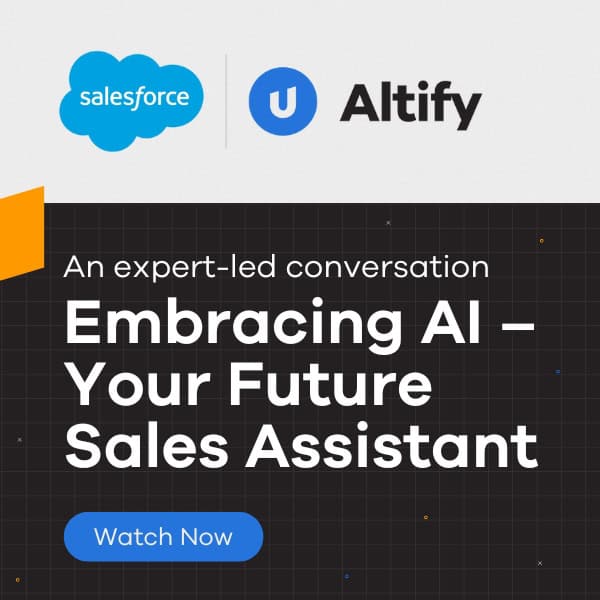A version of this post from The TAS Group’s Lara Shackelford originally appeared on The Business Journals.

They say the best way to predict the future is to study the past, and that is certainly true of sales.
As the end of the year approaches, the most strategic salespeople are turning their eyes to the year ahead. The sales landscape of 2016 will have a huge impact on forecasts and projected revenue, and salespeople want to be able to plan accordingly.
We can predict the landscape of the next year in sales by taking a close look at the industry’s seminal event this year: Dreamforce.
Every year, San Francisco hosts the single most massive sales event of the year. In September, 170,00 people swarmed to the city to network, learn, and talk about all things sales. Bringing together that many influential industry members in one place has a huge impact, and not just on San Francisco’s hotel rates.
The topics and solutions discussed at Dreamforce (my company, The TAS Group, was a sponsor of the conference) set the tone for where sales innovation will be focused in the next year.
This year, Dreamforce innovation focused on two main tracks: developing smarter software and using technology to bring salespeople closer to their customers. Industries, like people, must end every year smarter and wiser. If businesses want to stay competitive, they’ll need to keep up.
Get Smarter
Artificial intelligence (AI) is a hot topic across industries right now, but according to some investors, sales is one of the areas where it will play the biggest role. At Dreamforce, intelligent software was the focus of dozens of panels, keynotes and discussions, mostly in the context of automation and machine learning. What that means for sales organizations is a faster sales cycle and a stronger emphasis on relationship building in the coming year.
Already, many companies are using software that anticipates salespeople’s needs and assists them through the sales process, and soon that type of technology will be ubiquitous. We’re starting an age where sales expertise can be built into a program. Salespeople will have complete visibility into their pipeline and be able to make much more accurate forecasts. At the same time, the mindless administrative tasks that used to come with selling will be outsourced to the same technology, so salespeople will be able to be much more nimble – and quick. The average rate of sales will intensify fast, and those companies that are a bit slower on the uptake will fall behind. According to Salesforce, high performing sales teams are more than three times more likely to use sales software than underperforming teams and are eight times more likely to be aggressive technology adopters than underperformers.
In 2016, the sales landscape will require significantly more speed and agility from sales teams, as well as a shift in priorities. In order to be successful in the new smart landscape, businesses will need to emphasize technology enablement for salespeople.
Get Wiser
An industry-wide shift to a blended software approach means something more than faster selling. It means businesses are going to need to get a lot savvier about exactly what is going on behind the screen. Not all technology is created equal, and there are big potential problems with some of the trendier features like predictive analytics, which work with limited data sets out of context. In order for data to be truly valuable, it needs to be presented in context. Data, without knowledge, is still just data.
That means companies can’t afford to rely on technology to get “smarter.” They also have to get wiser, and think bigger than analytics. They have to learn to use all their new data in a way that matters.
According to Salesforce CEO Marc Benioff in his Dreamforce keynote, most sales teams are only using one percent of the customer data available to them. If that’s true, imagine what we could do with the other 99 percent if we infuse that data with sales knowledge. There is a massive opportunity to combine new data with outside knowledge to cast new light on companies’ pipelines, sales velocity, opportunity management – and most importantly, customers. That could help companies better understand customer preferences, potential risks, and best practices for each engagement. That’s what the future of sales innovation will be focused on: delivering deeper insights in real time that will make salespeople more effective, and selling much more personal.
To reap the benefits of all that new data, salespeople need to learn to find the information that’s important to their customers and use it to connect in a way they couldn’t before. Because they’ll have deeper insight into the customer, salespeople will be able to understand their problems better—and thus address them more directly. That means customer connectivity above all else.
For a great consumer example, consider Pandora. Pandora makes buying suggestions based on the type of music people stream, but also based the knowledge that it applies about musical genres, beats-per-minute, mood, relationships between artists, musical styles and so on. It’s not just about the data – it’s also about the knowledge. Salespeople could do the same thing at a much more advanced level, but instead of music preferences, they could apply their company’s knowledge of consistent customer business challenges and take things a step further by explaining how those challenges might be overcome with the appropriate solution. The result? More sales and happier customers.
The single most resonant message at this year’s conference was that customers come first. Every software breakthrough was framed as a way for businesses to better connect with, and serve, their customers. Hopefully, that message is an accurate reflection of where sales is as a whole. If it is, we’re in for a year of smart, wise selling that’s better for buyers than anything before.



